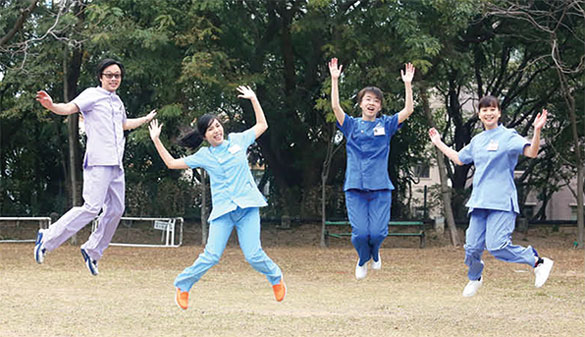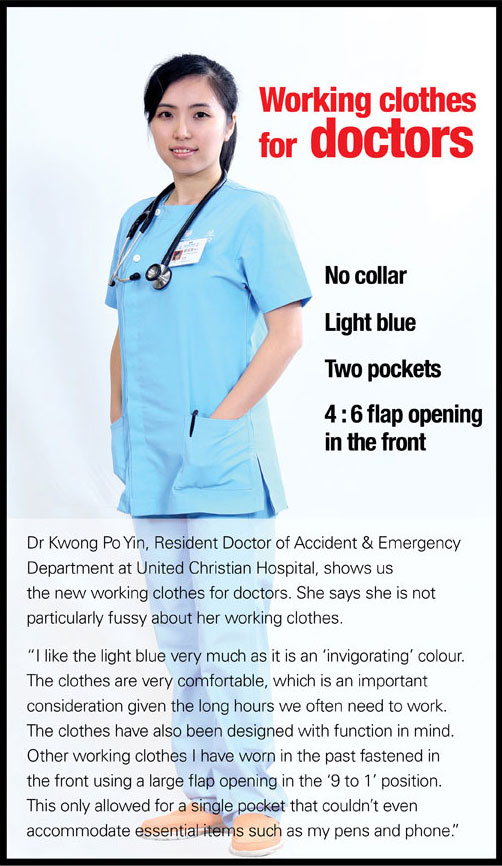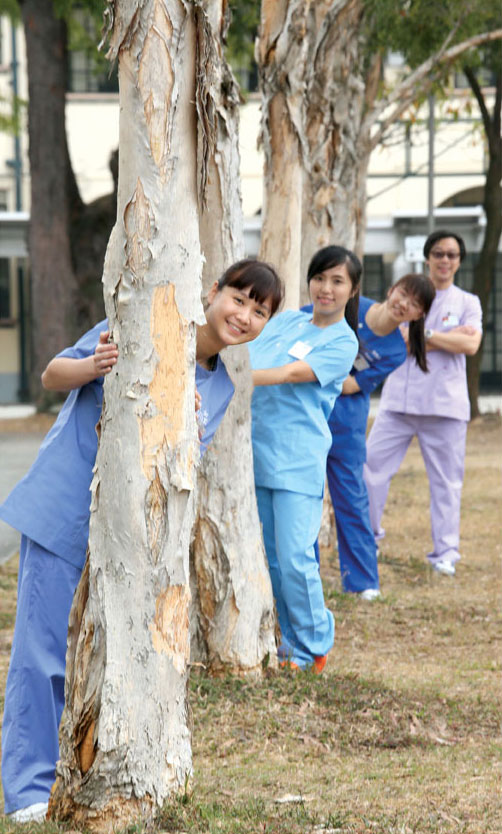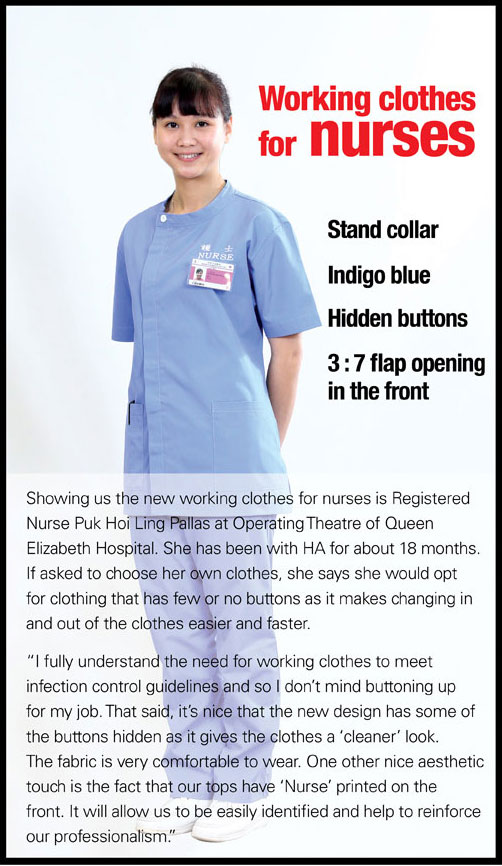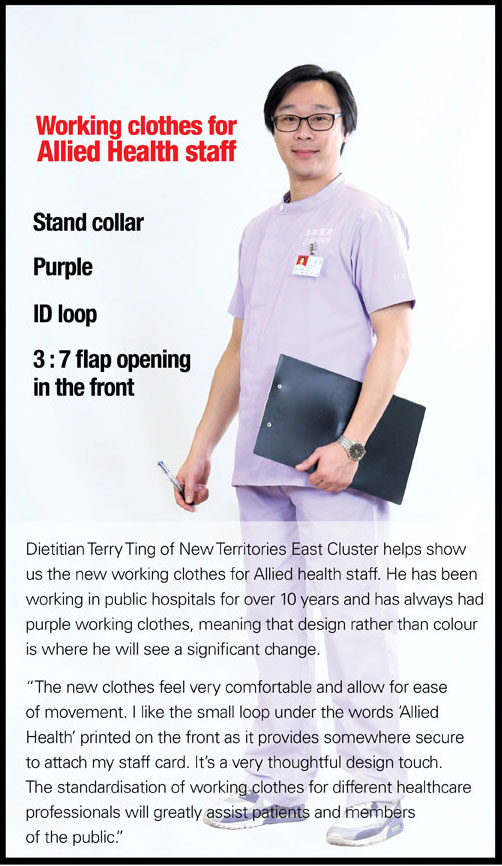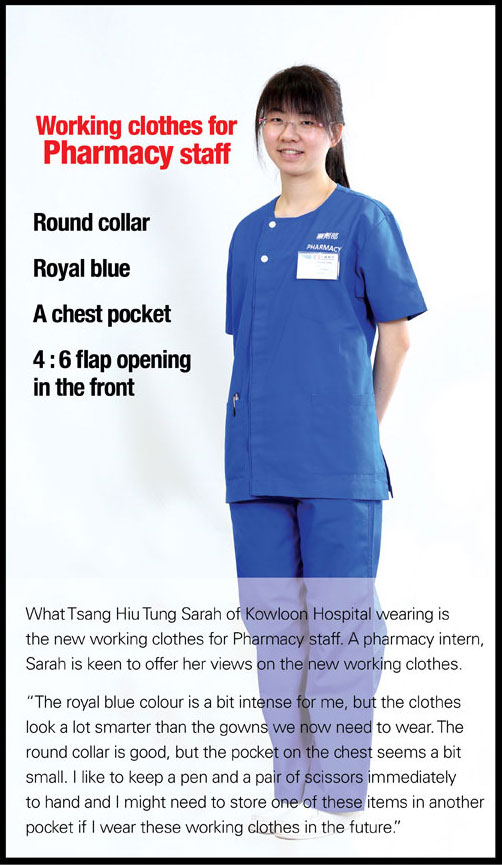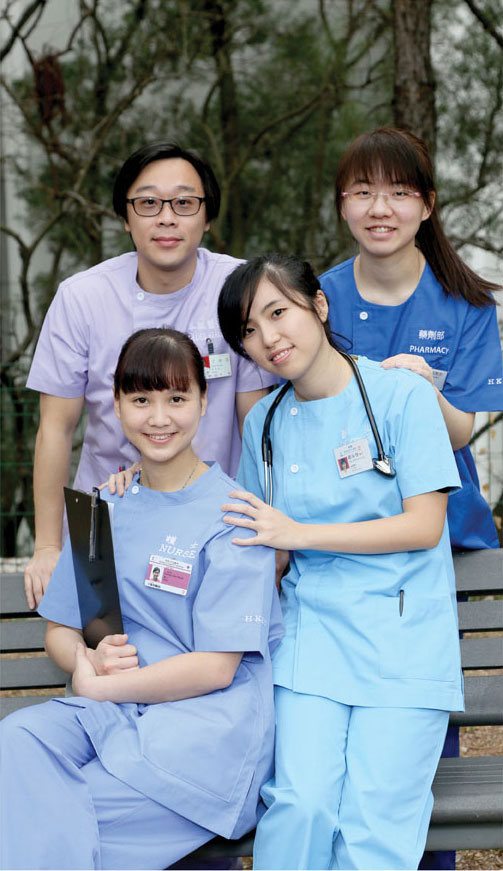A colour palette of confusion
At present, visitors to HA may find it tricky to tell different types of healthcare workers apart. In addition to the huge variety of colours and designs, staff with different jobs and of different grades will often wear the same type of working clothes. For example, both doctors and dispensers will sometimes wear white gowns, while an individual in green gown could be an anaesthesiologist or a member of supporting staff.
“There are 42 hospitals and institutions, 47 Specialist Out-patient Clinics and 73 General Out-patient Clinics managed by HA. Across these various institutions, it is possible to find examples of around 60 different sets of working clothes,” says Irene Lee, Cluster General Manager (Nursing) for Hong Kong West Cluster and General Manager (Nursing) at Queen Mary Hospital and Tsan Yuk Hospital. “There is currently no standardisation in colour or style, making it virtually impossible to identify a person’s job or rank from their clothing alone.”
“The issue has historical roots, with different hospitals and healthcare institutions developing working clothes in isolation from each other and based on their specific preferences and needs,” Irene continues. “In the early days of Queen Mary Hospital (QMH), only nurses in the newborns ward, Neonatal Intensive Care and Paediatric Intensive Care wards wore working clothes. Over time, Adult Intensive Care ward also came up with its own working clothes design. After the outbreak of SARS in 2003, doctors at QMH were issued with working clothes and other units also began to independently develop workwear for staff.”
The potential confusion caused by the lack of standardisation
within and across different hospitals has been compounded by a liberal approach to one department or job function picking up on a clothing design previously used elsewhere. At QMH, for example, the workwear formerly worn by nurses on the newborns ward is now used by workers in the hospital’s milk kitchen.
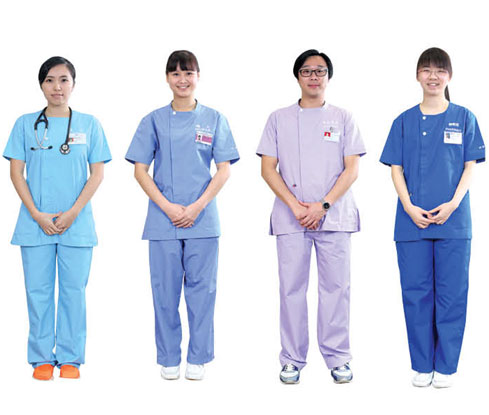 New working clothes |
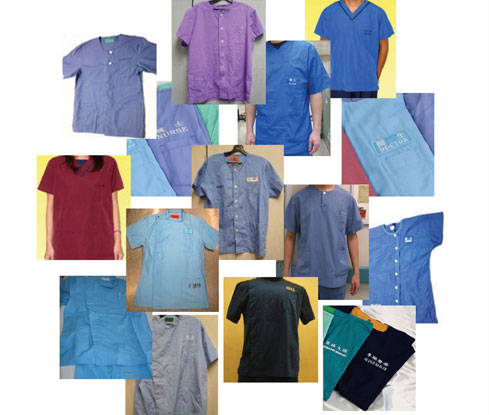 Current working clothes |
